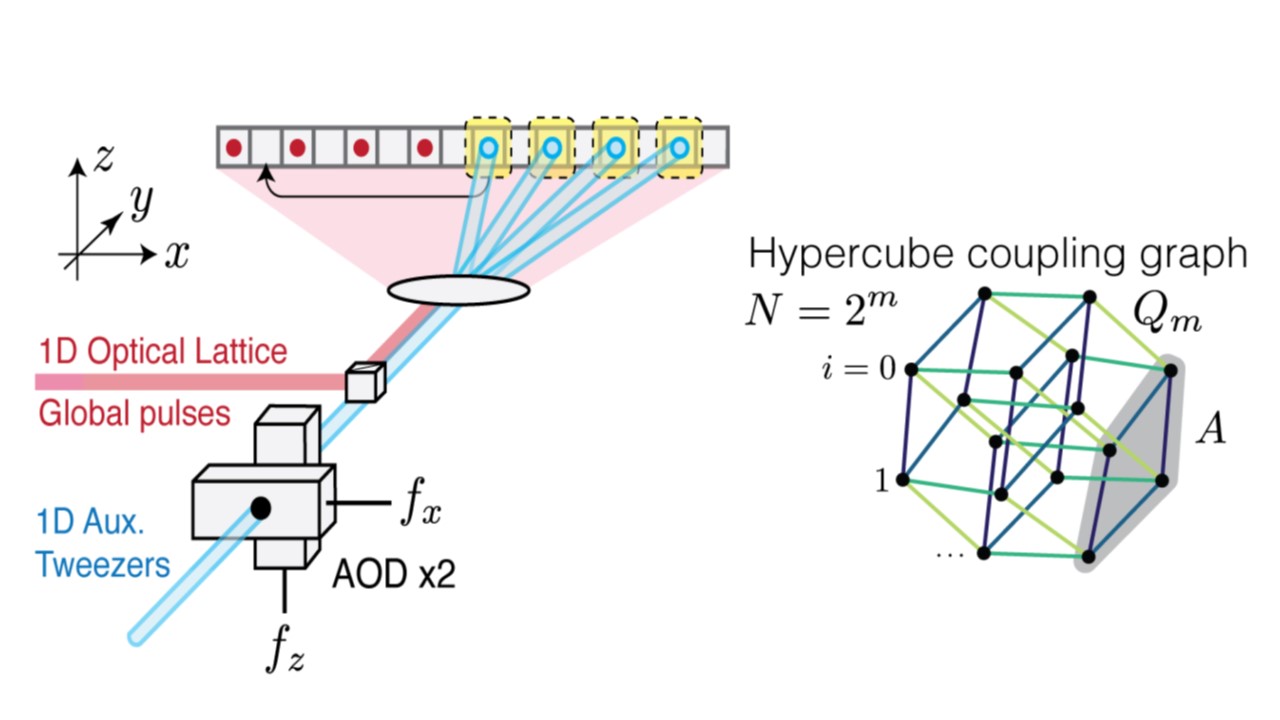Fast Scrambling of Quantum Information in Atom Arrays
Understanding how information spreads in microscopic systems is important across different areas of physics, ranging from fundamental understanding of the behaviour of Black Holes, to the engineering and implementation of quantum computers. The fastest information spreading believed to exist is conjectured to occur in black holes, where information can spread across all available parts (degrees of freedom) of the system in a time that grows only as the logarithm of its size. Systems that spread information this quickly are referred to as fast scramblers of quantum information.
In a new paper in Physical Review Letters, Tomohiro Hashizume and Prof. Andrew Daley from the Department of Physics, together with collaborators Dr. Gregory Bentsen (Brandeis University) and Sebastian Weber (University of Stuttgart) have shown how a fast scrambler for quantum information could be built in the laboratory, using the unique control that is possible in arrays of trapped neutral atoms. In these systems, identical individual neutral atoms are held in laser beams referred to as optical tweezers, which can be moved using acousto-optic deflectors (AODs). The scheme combines operations that shuffle the atoms’ location in the tweezer array with laser excitations. In combination, these steps make information spread between the atoms as if they were arranged in a high-dimensional hypercube.
This scheme is directly applicable to ongoing experiments, and could enable a variety of technologies, ranging from studies of toy models of black holes to efficient protocols to correct errors in quantum computing, or tailored quantum states as a resource for quantum measurement and sensing.

Tomohiro Hashizume, Gregory S. Bentsen, Sebastian Weber, and Andrew J. Daley, Deterministic Fast Scrambling with Neutral Atom Arrays, Phys. Rev. Lett. 126, 200603 (2021)
June 2021